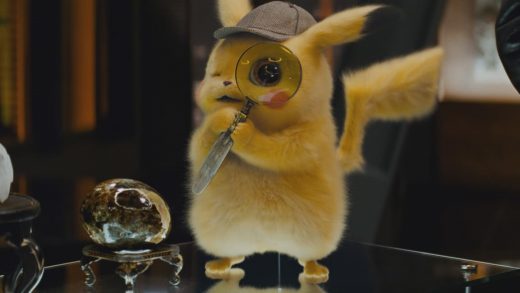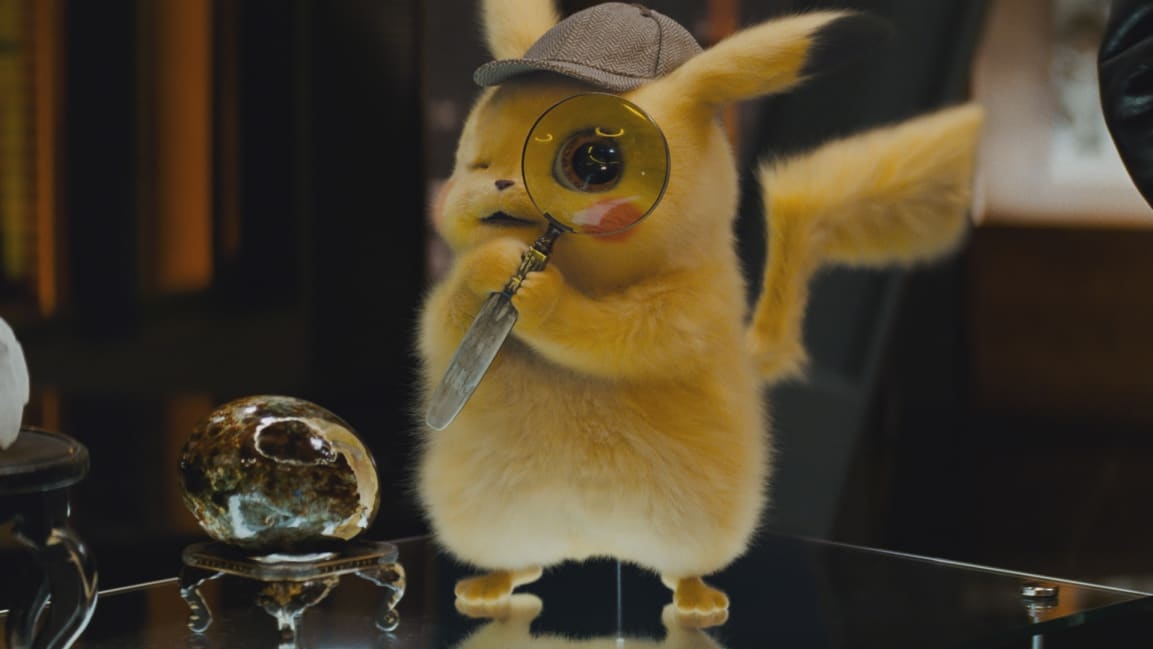Inside the blood, sweat, bureaucracy, and physics of “Pokémon: Detective Pikachu”
Back in January 2017, visual effects supervisor Erik Nordby got a call from director Rob Letterman about a new movie he just signed up for. The two had previously worked together on 2015’s Goosebumps, so Nordby was pretty much sold on the prospect of working with Letterman again–but it was his actual pitch that really hooked him. Letterman told Nordby he wanted to create something that hearkened back to Amblin Entertainment’s string of ’80s classics like E.T. and The Goonies with a heartfelt father-and-son story at the center.
“It’s set in this film-noir vibe, and he wants to shoot on film and be gritty and real and hop on this new appetite for things such as Stranger Things,” Nordby recalls. “It was probably a five-minute pitch and I’m like, ‘Wow, that sounds incredible. I’m totally in.’ And then he goes, ‘Well, let me tell you the title: Detective Pikachu. It’s a Pokémon movie.’”
Clearly, Letterman knew exactly how to pitch a movie like this to someone like Nordby.
“I said, ‘I’m really glad you told me in that order because I think if you would’ve started just saying Pokémon, my brain would have just filled with a ton of things.”
Created in 1995 by Satoshi Tajiri, Pokémon has become, reportedly, the highest grossing media franchise of all time. The basic premise of Pokémon is that there’s a world of monsters that humans can catch and train to battle each other. That simple idea has exploded into a global phenomenon that spans video games, trading cards, comic books, television, and more than 20 films.
But Pokémon has stayed within the realm of animation for its entire history. Until now: Pokémon: Detective Pikachu is the first live-action film of the Pokémon franchise, which opened a floodgate of challenges for Nordby, particularly with Letterman’s vision for where he wanted to take the story.
“I kept reminding him of that original pitch and how close we ended up sticking to that, which in Hollywood is a miracle,” Nordby says. “He recognized that the property was so colorful, so over the top, so cartoony, that if he didn’t allow the pendulum to swing the other way aesthetically, it wouldn’t give it any sort of weight. It wouldn’t give it something that people could sink their teeth into.”
Detective Pikachu follows Tim, an aimless twentysomething whose estranged father (a detective in Ryme City where Pokémon live and work side by side with humans) is presumed dead after an attack from a rogue Pokémon. Thinking he was just going to pack up his father’s apartment and find some closure, Tim gets sucked into a media and corporate conspiracy and is soon piecing together the clues of his father’s alleged murder–with the help of his father’s detective partner, Pikachu.
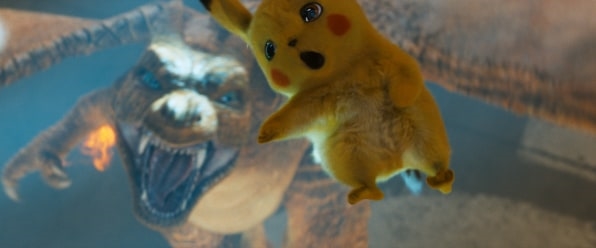
An unconventional plot for a Pokémon movie called for unconventional means of bringing the characters to life. To get the right look, Nordby and Letterman devised two important rules: One, they would maintain the original silhouettes of the Pokémon. “We tend to add heroic proportions to things, thinking that that’s how we beef up and make it more palatable for the Western audience,” Nordby says, “and that was just not anything that would work for this film.”
Two, it had to be believable that the Pokémon could survive like real animals. “The idea being that they would be able to feed themselves, they can reach their mouths with their arms, that their eyes wouldn’t be so big that they would dry out, that they have enough rooms for organs in their torso,” Nordby explains. “That allowed us to then sit down and, very scientifically, build them.”
Nordby and his team took inspiration from real animals (a coat of fur here, a pair of ears there, etc.) for frames of reference. They even went so far as to sketch skeletal systems for the Pokémon.
However, the most taxing character of all was of course Pikachu, who took six months alone to develop. “Every character brought their own challenges, but I think just because Pikachu is the main dude, that was the biggest one,” Nordby says. “Number one, his face is essentially a pancake. So there’s very little for him to emote with.”
There’s one scene in Detective Pikachu where Tim is telling the heartbreaking story of why he and his dad fell out. It’s a somber note in the film, and Pikachu’s animation is quite stunning. Here is this chubby-cheeked ball of yellow fluff delivering raw and very human emotions with a furrowed brow and sympathetic stare. That said, it was definitely a hard-earned victory for Nordby.
“You should see the original tests–it’s far less than amazing. It was extraordinarily disturbing,” he admits. “We would spend all of this time building it and you get something that would kind of work. But when we do our tests, we do it without any fur. And when you add a ton of fur on top of it, it would just completely mute the performance. He would be deadpan, and he would look like an asshole.”
And that fur proved to be an even harder issue to crack. “No furry animal has fur that saturated, and we didn’t want it to feel like hair was dyed,” Nordby says. “We wanted it to feel somewhat naturalistic.”
So Nordby looked to vibrantly colored animals like the red panda or foxes for inspiration. “We’d find these fur pelts, and we’d fly them into London–they were ridiculously expensive–and we’d look at every individual hair,” he says. “What you realize is that it’s not just one color, it’s a whole series of different colors. And a lot of them are actually clear filaments that when the light hits them, it bounces around and picks up the color of the hairs around it. We had to get down to that level of granularity. And once we did, we got something that at least felt like that the hairs themselves had grown.”
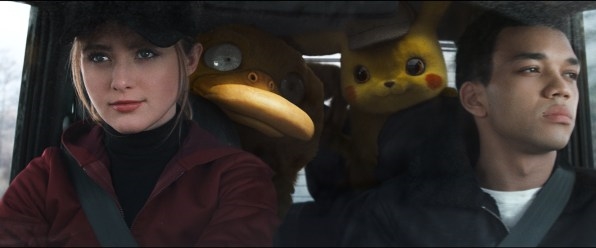
Once they got the basic concept for the Pokémon, Nordby had to figure how how they’d move in the real world. Animatronic-like stuffed animals were created in the Pokémon’s likeness, and Nordby hired a fleet of puppeteers to control them for scene blocking.
“We made them all the appropriate weights so when they would move, they’d have a certain speed,” he says. “By adhering to all the rules of physics and gravity and weight, when it came time to actually execute the shots in post, there’s a level of reality built in and we didn’t have to cheat our way out of it. When I watch movies, it’s so clear when they are able to do that and when they aren’t. Most audiences can sense when a character moves too quickly or is too light, and it just never works in the end.”
But perhaps the biggest hurdle for Nordby to clear was the repeated round of notes from the Pokémon Company, the parent organization for the Pokémon franchise. Knowing that this film steps so far out of the Pokémon canon, there was an inordinate amount of bureaucracy Nordby and his team had to navigate.
“We felt like we were drowning in approvals,” Nordby says. “Building anything visual effects takes months, and hundreds of people to execute it. So just adding the overhead of the [approval] process, you could sense that muscle in your head going, ‘Don’t completely give up, but let’s start cutting corners.’”
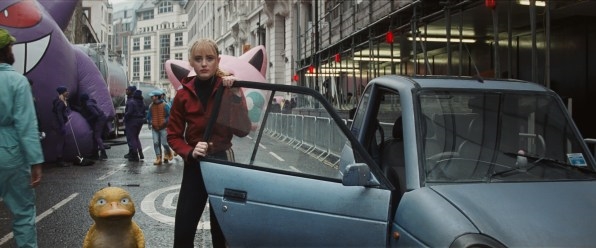
But Nordby and Letterman didn’t cut any corners, and the results are clear. What Detective Pikachu accomplishes in melding CGI animation and live action is notable on its own but is cast in an ever better light when compared to the Sonic the Hedgehog fiasco. Ever since the first images of Paramount’s live-action adaption of Sega’s popular video game franchise were released, the internet has mercilessly (and understandably) dragged Sonic’s design–so much so that director Jeff Fowler announced they would give Sonic a redesign.
“You get what you put in,” says Nordby, not necessarily speaking directly about Sonic the Hedgehog. “There’s a tendency in Hollywood to rush in prep and go, ‘Don’t worry, we’ll figure it all out once we’re done.’ In my world, the more you can get ready for that ahead of shooting the film and really wrap your head around all of the inherent challenges that the material presents, the better.”
“I feel for other films that don’t have that time because you will never be able to make it up,” he continues. “A lot of times you’ll see a film and it can be amazing, but there won’t be consistency to it. You’ll see some things that they’ve paid a lot of attention to and then there’s a lot of background stuff that just doesn’t work. What Rob was steadfast about from the beginning to the end was that we’re building one world. We’re not building a whole series of characters that each have their own world–it’s one world. And that just required a ton of work.”
(48)

